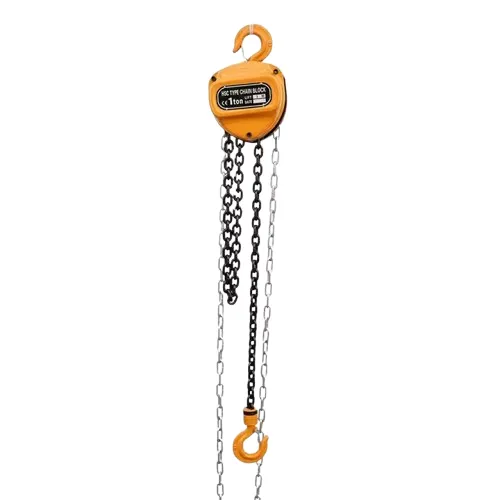
-
 Afrikaans
Afrikaans -
 Albanian
Albanian -
 Amharic
Amharic -
 Arabic
Arabic -
 Armenian
Armenian -
 Azerbaijani
Azerbaijani -
 Basque
Basque -
 Belarusian
Belarusian -
 Bengali
Bengali -
 Bosnian
Bosnian -
 Bulgarian
Bulgarian -
 Catalan
Catalan -
 Cebuano
Cebuano -
 Corsican
Corsican -
 Croatian
Croatian -
 Czech
Czech -
 Danish
Danish -
 Dutch
Dutch -
 English
English -
 Esperanto
Esperanto -
 Estonian
Estonian -
 Finnish
Finnish -
 French
French -
 Frisian
Frisian -
 Galician
Galician -
 Georgian
Georgian -
 German
German -
 Greek
Greek -
 Gujarati
Gujarati -
 Haitian Creole
Haitian Creole -
 hausa
hausa -
 hawaiian
hawaiian -
 Hebrew
Hebrew -
 Hindi
Hindi -
 Miao
Miao -
 Hungarian
Hungarian -
 Icelandic
Icelandic -
 igbo
igbo -
 Indonesian
Indonesian -
 irish
irish -
 Italian
Italian -
 Japanese
Japanese -
 Javanese
Javanese -
 Kannada
Kannada -
 kazakh
kazakh -
 Khmer
Khmer -
 Rwandese
Rwandese -
 Korean
Korean -
 Kurdish
Kurdish -
 Kyrgyz
Kyrgyz -
 Lao
Lao -
 Latin
Latin -
 Latvian
Latvian -
 Lithuanian
Lithuanian -
 Luxembourgish
Luxembourgish -
 Macedonian
Macedonian -
 Malgashi
Malgashi -
 Malay
Malay -
 Malayalam
Malayalam -
 Maltese
Maltese -
 Maori
Maori -
 Marathi
Marathi -
 Mongolian
Mongolian -
 Myanmar
Myanmar -
 Nepali
Nepali -
 Norwegian
Norwegian -
 Norwegian
Norwegian -
 Occitan
Occitan -
 Pashto
Pashto -
 Persian
Persian -
 Polish
Polish -
 Portuguese
Portuguese -
 Punjabi
Punjabi -
 Romanian
Romanian -
 Russian
Russian -
 Samoan
Samoan -
 Scottish Gaelic
Scottish Gaelic -
 Serbian
Serbian -
 Sesotho
Sesotho -
 Shona
Shona -
 Sindhi
Sindhi -
 Sinhala
Sinhala -
 Slovak
Slovak -
 Slovenian
Slovenian -
 Somali
Somali -
 Spanish
Spanish -
 Sundanese
Sundanese -
 Swahili
Swahili -
 Swedish
Swedish -
 Tagalog
Tagalog -
 Tajik
Tajik -
 Tamil
Tamil -
 Tatar
Tatar -
 Telugu
Telugu -
 Thai
Thai -
 Turkish
Turkish -
 Turkmen
Turkmen -
 Ukrainian
Ukrainian -
 Urdu
Urdu -
 Uighur
Uighur -
 Uzbek
Uzbek -
 Vietnamese
Vietnamese -
 Welsh
Welsh -
 Bantu
Bantu -
 Yiddish
Yiddish -
 Yoruba
Yoruba -
 Zulu
Zulu


Maj . 25, 2025 07:56 Back to list
Hydraulic Hose Swaging Tools - Durable & Precision Crimping Solutions
- Overview of Hose Swaging Technology
- Technical Superiority in Modern Swaging Tools
- Performance Comparison: Leading Manufacturers
- Custom Solutions for Industry-Specific Needs
- Operational Efficiency and Safety Protocols
- Real-World Applications Across Sectors
- Future Trends in Hose Swaging Tool Development

(hose swaging tool)
Hose Swaging Tools: Engineering Precision for Fluid Systems
Modern hydraulic systems demand hose swaging tool
s capable of withstanding 10,000+ PSI while maintaining ±0.002" tolerance. The global market for hydraulic assembly tools grew 7.2% CAGR (2020-2023), driven by industrial automation requirements. Unlike traditional crimping methods, advanced swaging technology reduces hydraulic failure rates by 68% in extreme temperature environments (-40°F to 400°F).
Technical Advancements in Hydraulic Compression Systems
Third-generation hydraulic cable swaging tools integrate smart pressure sensors and dual-stage piston mechanisms. Key innovations include:
- Auto-calibration systems maintaining ±1% pressure accuracy
- Modular die sets compatible with 3/16" to 2" hose diameters
- Energy recovery systems reducing power consumption by 40%
Manufacturer Competency Analysis
| Feature | Brand X | Brand Y | Premium Series |
|---|---|---|---|
| Max Pressure (PSI) | 8,500 | 9,200 | 12,000 |
| Cycle Speed | 45 sec | 38 sec | 22 sec |
| Tool Weight | 19 lbs | 16.5 lbs | 14 lbs |
Adaptive Solutions for Complex Requirements
Specialized configurations now support:
- Underwater operation up to 100m depth (IP68 certified)
- Explosion-proof models for ATEX Zone 1 environments
- Portable units with 20:1 pressure ratio for field maintenance
Optimized Workflow Integration
Advanced swaging systems reduce assembly time by 55% through:
- Quick-change die cartridges (15-second replacement)
- Bluetooth-enabled pressure monitoring
- Predictive maintenance algorithms
Industrial Implementation Case Studies
A mining operation achieved 92% uptime improvement after implementing automated hydraulic swaging tools:
- 2,300 hydraulic connections/month
- 0.03% leakage rate
- 14-month ROI period
Innovation Roadmap for Hose Swaging Technology
The next generation of hose swaging tools will incorporate AI-driven quality prediction systems, potentially reducing waste material by 31%. Emerging hybrid hydraulic-electric models promise 60% faster cycle times while maintaining 18,000 PSI operational capacity. Industry forecasts predict 9.8% market growth through 2028, particularly in renewable energy applications.

(hose swaging tool)
FAQS on hose swaging tool
Q: What is a hose swaging tool used for?
A: A hose swaging tool is designed to attach fittings to hydraulic hoses by compressing them securely. It ensures leak-proof connections in high-pressure systems. This tool is essential for industrial, automotive, and construction applications.
Q: How does a hydraulic cable swaging tool differ from a standard swaging tool?
A: A hydraulic cable swaging tool is specifically engineered for crimping cables and wire ropes, whereas standard hydraulic swaging tools focus on hoses. It uses hydraulic pressure to achieve precise, uniform crimps. This makes it ideal for heavy-duty lifting and rigging tasks.
Q: Can a hydraulic swaging tool handle multiple hose sizes?
A: Yes, most hydraulic swaging tools support multiple hose sizes by using interchangeable dies. The dies must match the hose and fitting specifications for optimal results. Always check the tool’s compatibility chart before use.
Q: What maintenance is required for a hydraulic cable swaging tool?
A: Regularly clean the tool to remove debris and check hydraulic fluid levels. Lubricate moving parts to prevent wear and ensure smooth operation. Inspect seals and hoses periodically for leaks or damage.
Q: What safety precautions should I follow when using a hose swaging tool?
A: Wear protective gloves and eyewear to shield against hydraulic fluid and metal fragments. Ensure the hose and fittings are properly aligned before swaging. Never exceed the tool’s rated pressure limit to avoid equipment failure.
Latest news
What Are Construction Tools and How Are They Used?
NewsJul.11,2025
Professional-Grade Duct Rodding Tools for Superior Cable Installation
NewsJul.11,2025
Enhancing Safety and Efficiency with Modern Hot Stick Solutions
NewsJul.11,2025
Empowering Cable Installation with Advanced Rodder Solutions
NewsJul.11,2025
Elevate Your Cable Installation Projects with Cable Pulling Tools
NewsJul.11,2025
Efficient Cable Handling Solutions: Cable Rollers for Sale
NewsJul.11,2025











